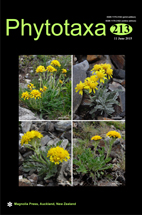Abstract
Cercospora (Mycosphaerellaceae) is a large genus of fungi comprising many important plant pathogens. In recent years DNA-based studies have revealed multiple genera of cercosporoid fungi being poly- and paraphyletic. Among these genera, the genus Cercospora has always been perceived as monophyletic. In the present study, phylogenetic inferences based on partial gene sequences of the LSU, ITS, ACT, TEF1-α and HIS loci, elucidated a cercospora-like taxon from Ammi majus to cluster in a clade apart from Cercospora s. str. In spite of numerous Cercospora spp. presently known from their DNA sequence data, this collection represents the first concrete evidence to the fact that the morphological characters previously attributed to Cercospora s. str. evolved more than once in the Mycosphaerellaceae. The genus Neocercospora is subsequently introduced to accommodate the Iranian taxon occurring on A. majus. Further collections on other hosts and from different continents are now required to establish the prevalence and relative importance of species of Neocercospora.

